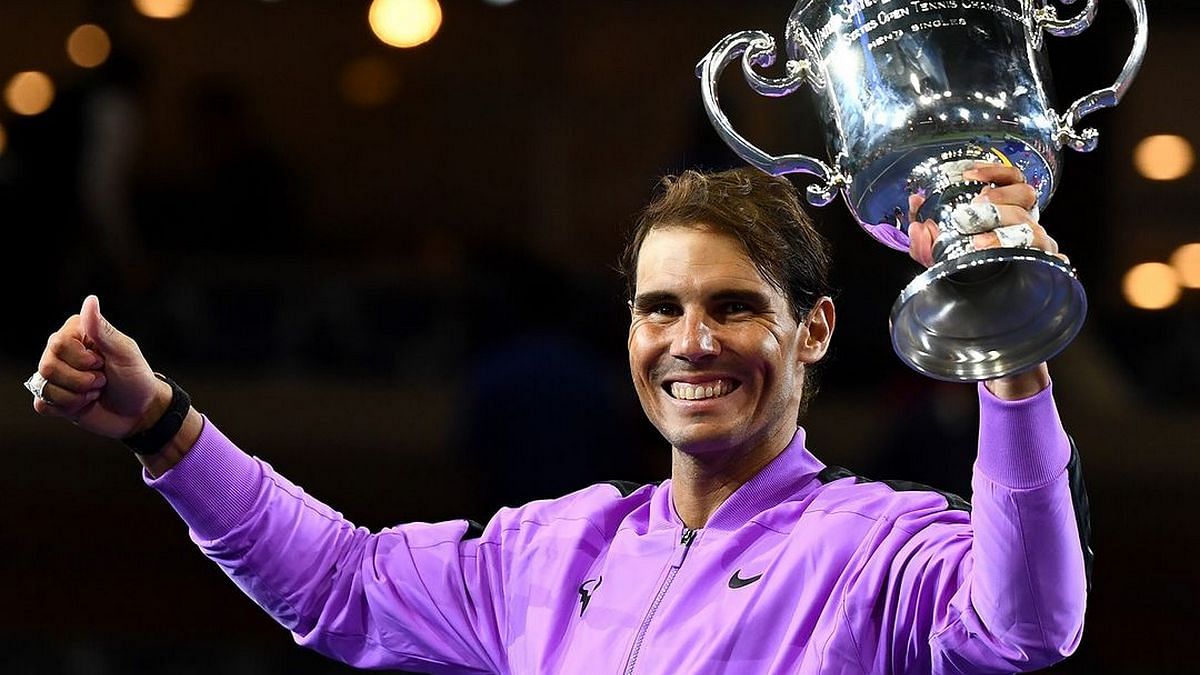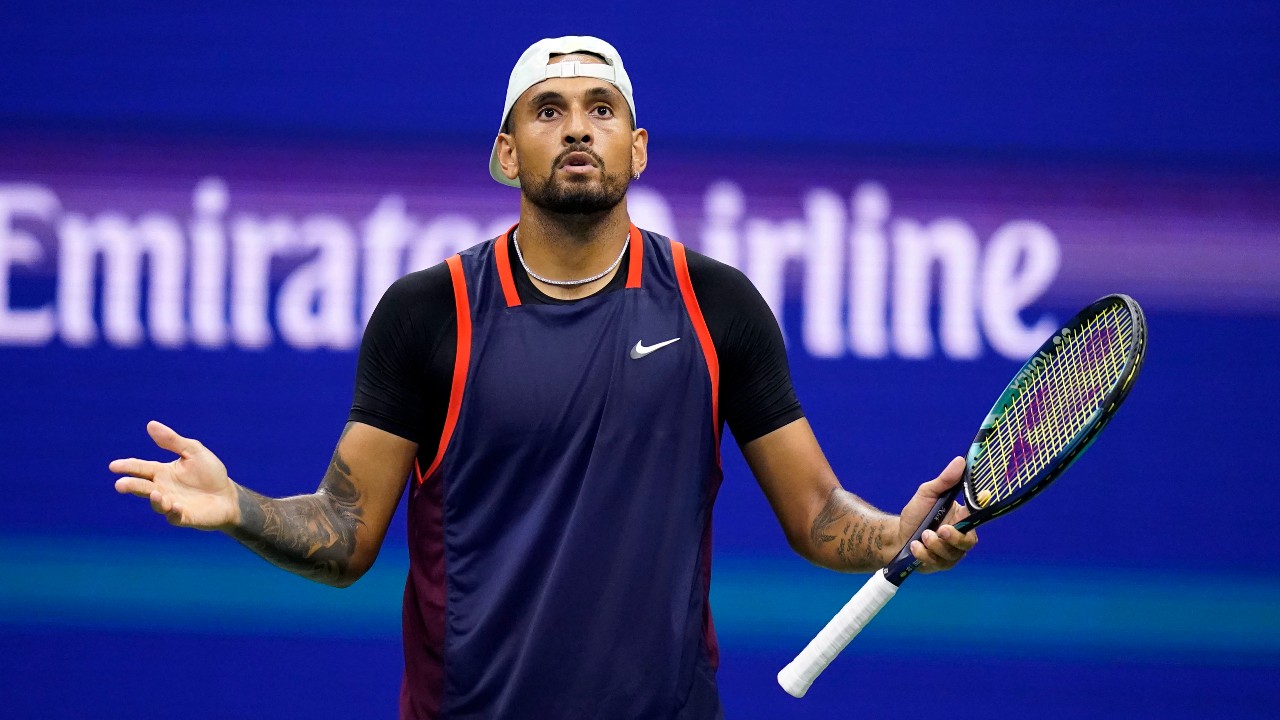Calling Nadal the ‘King of Clay’ sells him short. He’s so much more—even wabi-sabi moments

Rafael Nadal’s retirement at the Davis Cup finals this week will bring down the curtain on a distinguished career of more than two decades. To a sports fan, the retirement of a beloved legend feels almost like bereavement. No matter how hard the fan tries, a few tears inevitably sneak through the brave façade. The realisation slowly dawns that the days of regularly witnessing the player’s brilliance are over. Only a repository of memories remains—one that needs to be tapped into again and again, whether in the confines of the mind or on YouTube.
A career such as Nadal’s, with all its milestones, often serves as a metric of time for fans. For some, their coming of age in high school is inextricably linked to Nadal’s all-conquering Roland Garros debut; for others, the pangs of first love are forever linked to one of Nadal’s 22 Grand Slam victories. For those born in the 1990s, Nadal’s receding hairline is a reminder of their own creeping age, and for the larger fandom, his injury- and age-induced retirement represent the ‘Thanos-esque’ inevitability of time itself.
Not just the ‘King of Clay’
In the imagination of many, Nadal symbolises relentlessness, intensity, resoluteness, determination, and scores of other adjectives commonly associated with hard-working people. This isn’t surprising, as Nadal indeed epitomises all these qualities. However, this perception—and the discourse around it—also does a great disservice to Nadal and his legacy.
While discussing sports rivalries, commentators often try to draw out a contrast and, over time, relative differences in skill, grace, and determination turn into a fixed narrative. A hierarchy and caricature of reality get created, wherein one player becomes synonymous with everything otherworldly and the other with everything ordinary. These labels get endlessly rehashed and treated as gospel truth, surviving for posterity and doing injustice to both sides. In Nadal’s case, they add a translucent layer to the brilliance of his spin-laden ‘banana’ forehand, overheads, court sense, and volleys.
Another unintentional disservice has been anointing Nadal as the ‘King of Clay’. Because of this characterisation, Nadal’s great records on grass and outdoor hardcourts are often lost on casual observers. Nadal won eight slams outside the French Open. In the Open Era, only Novak Djokovic, Roger Federer, Pete Sampras, and Bjorn Borg have won more total slams. Without even counting his French Open titles, Nadal makes the top 5 in the Open Era. Further, even if one gives in to the temptation of crowning Nadal for his clay court prowess, ‘King’ seems a misnomer. Any label short of ‘Emperor’ is inappropriate for a guy whose writ (or racquet) ruled over Monte Carlo, Barcelona, Rome, Madrid, and Paris for years and years on end.
Nadal’s performance on Wimbledon’s grass courts oscillated between extremes. The lows he hit during the 2012-17 period obscure how high his highs were at other times. He reached five consecutive Wimbledon finals in the 2006-11 period (he didn’t play the tournament in 2009), winning two and losing only to Federer (twice) and Djokovic (once). Then, in the 2018-2022 period, he reached three consecutive semifinals (the tournament was not held in 2020 because of Covid-19, and he skipped 2021). In 2018, he narrowly lost to Djokovic in a tight five-setter and in the following year to Federer, who was playing exceptionally well. In 2022, he withdrew before the match because of an abdominal tear. On either side of 2012-17, only Federer and Djokovic, the other two all-time greats, could challenge him on grass, and these contests were always closely fought.
Nadal’s record on the hard courts of the US Open is comparable to Federer and Djokovic. He won four titles in 16 appearances, beating Djokovic twice in the final (2010 and 2013). Djokovic also has four titles in 18 appearances, while Federer won five in 19. Nadal also made it to six Australian Open finals, winning the tournament twice. Of the four losses, two were in five-setters to Djokovic (2012) and Federer (2017), while in his 2014 loss to Stanislas Wawrinka, he was clearly hobbled by injury. Only the 2019 loss was a rout at the hands of Djokovic.
The one that got away
Nadal has had such a successful career that expecting anything more feels ungrateful, both to the tennis gods and to Nadal himself. Yet, a fan isn’t a fan if they don’t indulge in idle what-ifs and endless regrets over missing trophies. For many Nadal fans, perhaps the biggest regret is the absence of an ATP Finals trophy in his collection. In some ways, it can be argued that if Nadal really had a relative weakness, it was the indoor hard courts. It is still confounding, though, that a player of his calibre never managed to win this tournament in 11 appearances. He came close twice, reaching the finals in 2010 and 2013, but lost to Federer and Djokovic, respectively.
Timing played a role too. Nadal’s most dominant period was 2008-2013. Early on, this overlapped with a still-dominant Federer and, from 2011 onwards, with a peak-form Djokovic. By 2017, when relatively lesser players started to win the tournament and Djokovic’s hold and interest in it waned, Nadal had lost the ability to sustain his brilliance throughout the year. He peaked for slams and some of his favourite Masters 1000 tournaments but remained indifferent to everything else.
In the grand scheme of things, however, the absence of an ATP Finals trophy is a minor blemish. If anything, it adds a wabi-sabi aesthetic to Nadal’s career and legacy.
Also Read: Rafael Nadal has an Anantapur connection. He has retired but here he remains a forever champion
Three giants and a gentleman
Nadal’s legacy is as much about his on-court demeanour as it is about his numbers. It is well-known that Nadal has never broken a racquet in his professional career. Even more inspiring is how his example has influenced many young tennis stars. Three-time slam finalist Casper Ruud, who trained at Rafael Nadal’s academy, has never broken a racquet and credited Nadal for inspiring his own self-control. Arguably a legend-in-making and Nadal’s compatriot, Carlos Alcaraz broke a racquet recently but then promptly apologised for it on social media. The present world number one Jannik Sinner has publicly expressed his distaste for racquet-breaking.
In a sport where smashing a racquet to smithereens is often seen as a way to vent frustration, Nadal paved the way for a new approach. He made it cool to stay cool on the court.
Nadal’s legacy is as much a legacy of three men as it is of one. Without the other two, all three would have won far more titles. But then the sport and the fans would have been poorer for it. The magic lay not just in watching one of them claim victory, but in witnessing them win against two other anomalies of nature.
Attributing a quote to someone is always a risky proposition, but Albert Einstein is believed to have praised Mahatma Gandhi in effusive terms on the latter’s 70th birthday. With a few tweaks, the same praise fits this trio’s collective legacy perfectly: Generations to come, it may well be, will scarce believe that such three men as these ones ever in flesh and blood graced the tennis courts simultaneously.
The writer works with a leading global consulting firm. He tweets @mishraachyut. Views are personal.
(Edited by Asavari Singh)
Related
Cameron Norrie advances at Indian Wells but top seed Alexander…
Great Britain's Cameron Norrie fought from a set down to reach the third round at Indian Wells but top seed Alexander Zverev was d
Tommy’s Time: All-Court American Seeks Next Milestone
His coach Brad Stine says that these types of big goals are what keeps the New Jersey native motivated. “There are still a lot of things within the sport tha
Nick Kyrgios acknowledges uncertain future after retirement from match with…
The latest setback for Nick Kyrgios has the Australian tennis player wondering aloud about his future. A nagging wrist injury forced an emotional Kyrgios to r
Former Indian Wells champion says she is ‘very sorry’ as…
The 2025 Indian Wells tournament is well underway as the stars of the WTA Tour search for success in the Californian desert.Several top stars will believe they












